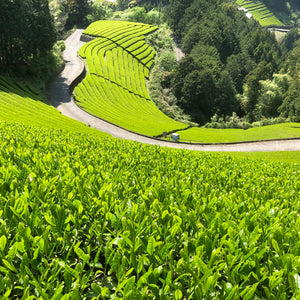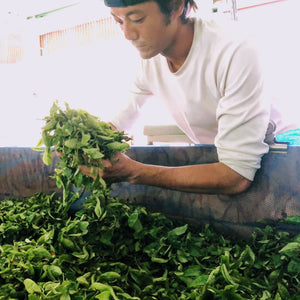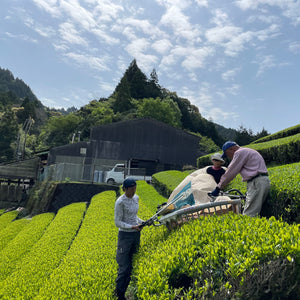
Ihachinouen Kabusecha
Tax included
Shipping calculated at checkout
In stock
Pickup currently unavailable
Ihachinouen Kabusecha (Shizuoka) — first harvest, 14 days of shading • Okumidori
The kabusecha of Ihachinouen Tea Garden, located on the hillsides of Aoi District, overlooking the Abe River at an altitude of around 450m, combines the fresh sencha experience with the round umami reminiscent of gyokuro.
It is made from the first spring harvest of the plantation, which is cared for with organic fertilization and without pesticides or artificial fertilizers, after 14 days of shading — this way the sip will be silky sweet and pure.
Balázs met the manager of the tea garden, the tea grower, in 2024. He works alone in the entire area. He is a member of the young generation of tea growers, and it is a pleasure to see this tradition being passed down.
You can find several of his teas in our tea shop. Wakocha, sencha and even genmaicha, for which he also produces and roasts the rice himself.
100 gram package, packaged in Japan, stored refrigerated.
Origin & processing
- Region: Ushizuma, Aoi-ku, Shizuoka City (Honyama region).
- Producer: Ihachinouen (Ihachi Farm), a family farm with over 100 years of history.
- Raw material: 2025 ichibancha (first picking), Okumidori tea plant variety.
- Shading: 14 days (with kanreisha netting), during the pre-harvest period.
- Style: semi-shaded green tea ( kabusecha ) — sencha freshness + gyokuro umami.
Flavor profile
- Aroma: fresh spring greens, steamed spinach, light hazelnut-nutty nuance.
- Taste: round, umami, low bitterness; sweetish algae-mineral line, green spiciness.
- Finish: long, clean, coolly sweet sensation, with a delicate silkiness.
Recommended preparation
Japanese (kyusu) with kanna or hohin
- 5 g tea / 200 ml soft water
- 1st pour: 70–75 °C, 60–90 sec.
- 2nd pour: 15–20 seconds (slightly warmer water); 3rd pour: 45–60 seconds
Western method
- 3g tea / 250ml
- 75–80 °C, 90–120 sec.
- Second pour: +30–40 sec.
Cold brew / cold soak
- 8–10 g tea / 1 liter
- Refrigerate for 6–8 hours
- Result: a crystal clear, sweet-umami cup with minimal bitterness.
Packaging & information
- Cultivar: Okumidori
- Pick: 2025 ichibancha
- Recommendation: soft, low-mineral water; fine-mesh filter for full leaf opening.
Note: The proportions are a guideline; you may want to adjust according to water, equipment, and taste. For shaded teas, too high a temperature can intensify the bitterness — it’s a good idea to start in the 70–75 °C range.
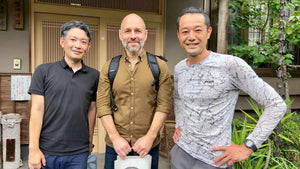
Personal contact
Our teas don't come from wholesale warehouses or unknown sources. We travel to the small producers we source from – whether it's a Japanese family tea garden, a Chinese mountain village or an oolong maker in Taiwan.
Stories
We meet them in person, learn their story, see how they care for their plants, and how they process the fresh leaves.
These experiences are the soul of our teas. This way, not only is the quality guaranteed, but also the fact that behind each cup there is a real person, a real story.
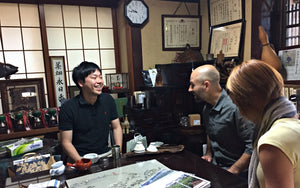
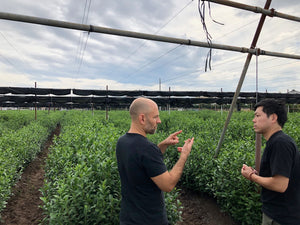
Direct
This direct relationship is valuable to us. Not only because of the excellent tea, but because we believe that trust, respect and personal presence are what make the tea drinking experience truly special.
Teavolution Tea Blog
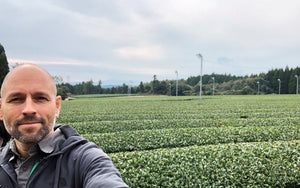
Oct 2, 2025
Sencha tea
Read more

Sep 21, 2025
Matcha hiány Japánban
Read more
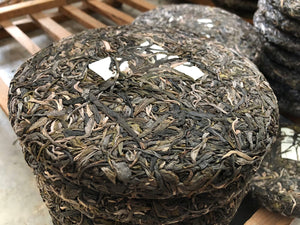
Mar 18, 2025
Puer tea, puerh or pu-erh
Read more
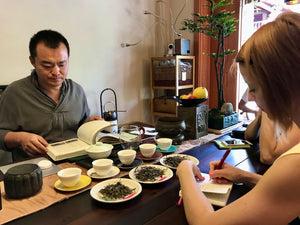
Mar 18, 2025
Types of tea
Read more
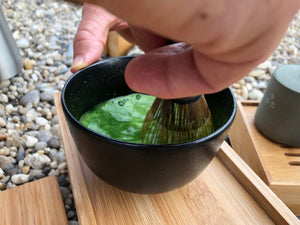
Mar 18, 2025
What is matcha tea?
Read more

Mar 18, 2025
Oolong tea (Wulong tea)
Read more

